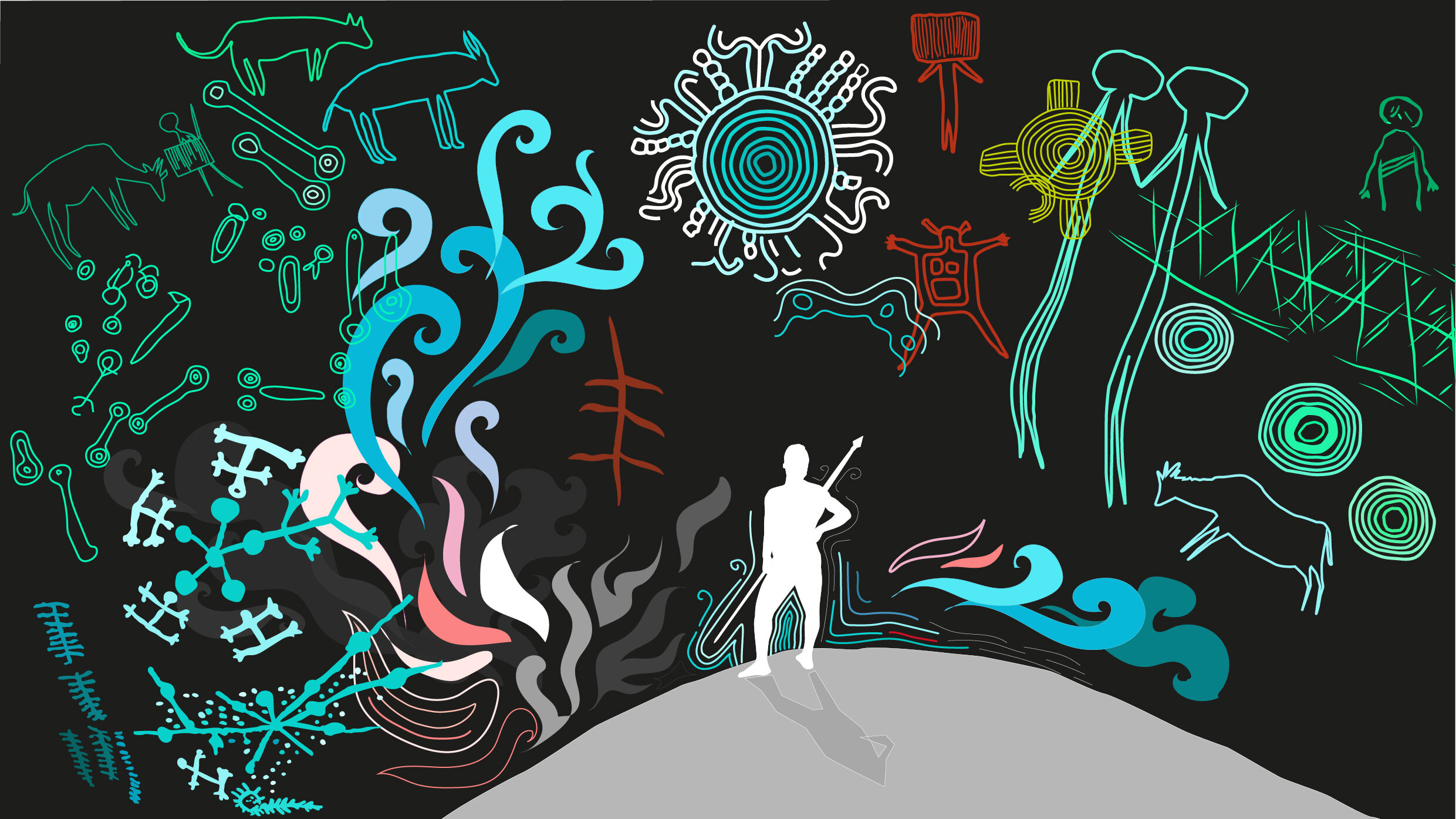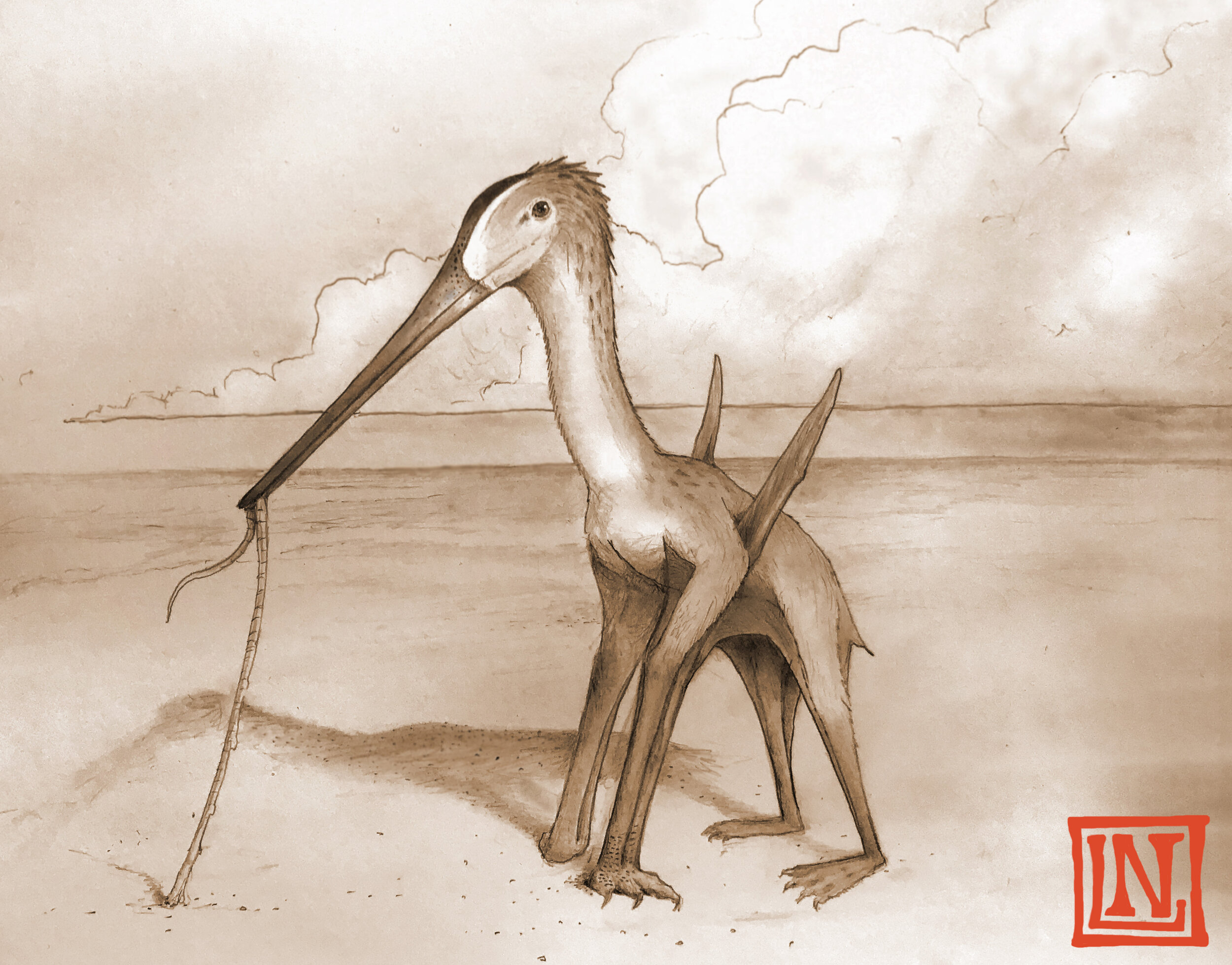Future Evolution- how will the human species evolve in the next 10,000 years?
A study of our past suggests some surprising things about our future. We’ll likely to live longer, become taller, and more lightly built. We may become more attractive. We’ll be less aggressive, and more agreeable, but with smaller brains. Imagine a species of tall, willowy, long-lived supermodels. We’ll be beautiful, but with the personality of a Golden Retriever- friendly, maybe not that bright.
The Vicious Vectiraptor
A handful of broken vertebrae hint at a new, large species raptor that prowled England during the Early Cretaceous.
Stone Age Innovators
It wasn’t necessarily inevitable that fire, or spearpoints, axes, ornament or bows would be discovered when they were. Then, as now, one person could literally change the course of history, with nothing more than an idea.
Sierraceratops, a new horned dinosaur from New Mexico, and dinosaur endemicity- why do giant dinosaurs have small geographic ranges?
Sierraceratops, a new horned dinosaur from the Southwest, fits a familiar pattern- different dinosaurs in different parts of the North American continent. Why do we find this?
How the end-Cretaceous mass extinction drove the evolution of modern snakes
Snakes originated in the time of the dinosaurs, but fossils of dinosaur-era snakes suggest they were distantly related to living snakes. An evolutionary tree of modern snakes, reconstructed using DNA, suggests that only a handful of species survived the end-Cretaceous mass extinction- and underwent an explosive diversification in the aftermath.
Stoned in the Stone Age - When Did Humans Start Experimenting With Drugs and Alcohol?
Homo sapiens uses an incredible range of chemicals to alter our minds. When and how did this peculiar habit develop?
Almost human: who were the primitive Homo sapiens who lived alongside us?
Our DNA suggests modern humans evolved around 250,000 years ago, but Homo sapiens fossils known from this time are far from modern. They had big brow ridges, long skulls, and broad jaws like Neanderthals. But while they looked primitive, these people were our contemporaries, not our ancestors. Who were they- and why did we replace them?
Ajnabia odysseus - the first duckbill dinosaur from Africa
At the start of the Jurassic, 200 million years ago, Pangaea starts to break up. By 90 MYA, when duckbills evolved in North America, the breakup was finished- and Africa was isolated from the rest of the world by oceans. By the time duckbills appeared, there was no way for them to get to Africa. Yet they did.
Neanderthal spears
The javelin was a simple but deadly weapon that helped determine the outcome of battles- and therefore shape history- for hundreds of thousands of years. Perhaps no other weapon has played a larger role in our history.
Why I love this Lehman Brothers mug
My name is Ozymandias, King of Kings; Look on my Works, ye Mighty, and despair!
The Kiwi Pterosaur
A bit of beak- long and skinny, flattened top to bottom, shaped not like a pterosaur, but the beak of a kiwi bird- a bird that uses its long, skinny beak to probe in the dirt for worms.
The Out-of-Africa Offensive
The Sapiens-Neanderthalensis wars lasted perhaps 100,000 from the time our ancestors first left Africa, until the last Neanderthal was killed.
War in the Time of Neanderthals
To war is human- and Neanderthals were very, very human. We’re remarkably similar in the anatomy of our skeletons and skulls, and share 99.7% of our DNA. Behaviorally, Neanderthals were incredibly like us. They made fire, engaged in ritual burial, fashioned jewelry from seashells and animal teeth. They used ochre pigments, possibly for makeup, made art and stone circles. Given that they shared so many of our creative instincts, they probably shared our destructive instincts as well.
When did humans evolve to become fully human?
When did something like us first appear on the planet? It turns out there’s surprisingly little agreement.
Why some species thrived after catastrophe– some rules for making the most of an apocalypse
66 million years ago, an asteroid struck the Earth, ending the Cretaceous period. In a moment, the world plunged into darkness, killing the dinosaurs and >90% of all species alive. Today, every living thing descends from the handful of surviving species, but not all survivors thrived.



















